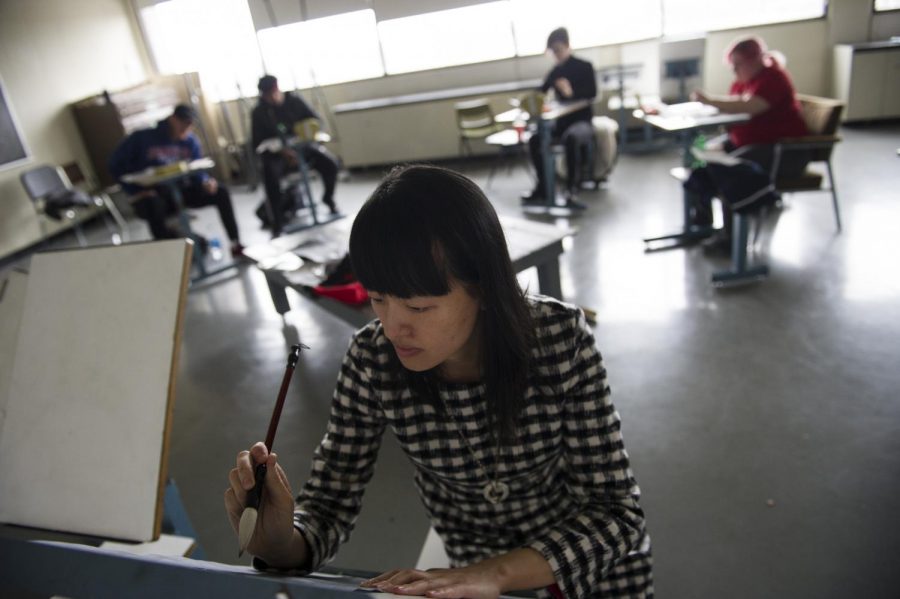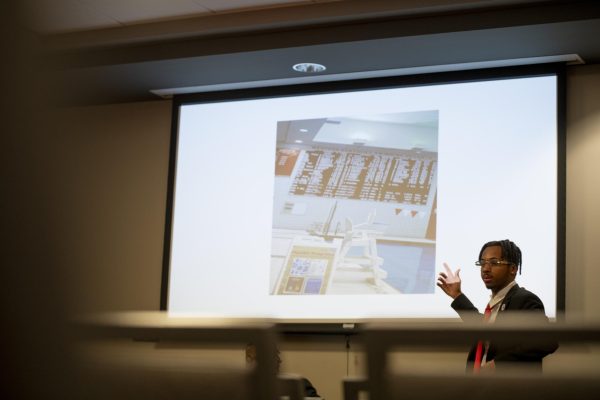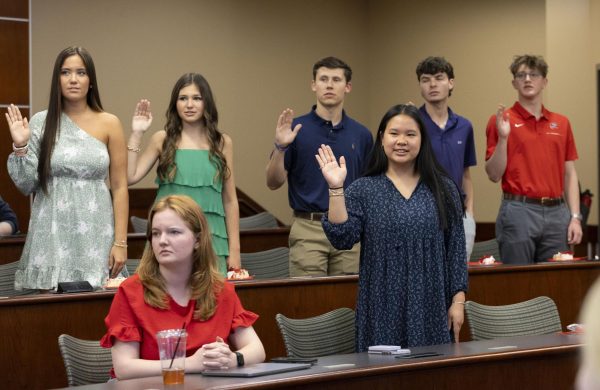Students learn culture from calligraphy
February 11, 2016
WKU is home to a growing Chinese language program that immerses students in traditional Chinese culture by giving them access to classes on topics like calligraphy.
Assistant professor of Chinese Huiqiang Zheng has spent the last two years teaching Chinese culture, literature and film at WKU. On Tuesdays and Thursdays, Zheng also teaches calligraphy to a class of five in the Fine Arts Center.
Owensboro freshman Hazel Rather, a Chinese major, is experiencing calligraphy for the first time this semester.
“It’s like a form of meditation,” Rather said. “It’s really calming when we’re not struggling.”
Montgomery, Alabama, junior Rachel Blondheim said a prerequisite for calligraphy is patience.
Blondheim, also a Chinese major, noticed that few people outside the Chinese major were willing to try a calligraphy class.
She said she joined the class because she saw an opportunity to bring value to her future career by learning a traditional art form in addition to the Chinese language.
Zheng’s students said they find her teaching methods incredibly helpful. She understands most of her students do not have any previous knowledge of calligraphy.
She began teaching with a basic method of painting dots that allowed students to become comfortable with a paintbrush. Zheng assisted students by using simple step-by-step methods when they got stuck.
“I like watching [students] progress and use what they learn to show and perform,” Zheng said.
Zheng learned calligraphy as a small child in China and said it is good for students to have a general idea of how characters form into letters and images. Students are taught how to form traditional characters but not necessarily how to understand the language.
Zheng’s main challenge with her calligraphy class is teaching students who are left-handed.
“Chinese is written right to left,” Zheng said. “Chinese people who are left handed learn to write with their right hand.”
However, this challenge has not stopped her students from progressing and finishing portfolio scratch books filled with images. Zheng’s calligraphy class last semester held an exhibition showcasing students’ work throughout the course of their class.
Zheng’s hope for her students is that they will feel like artists and fondly recall their experience learning calligraphy.
“I also hope they can enjoy learning and finding new adventures in their experience,” Zheng said.


























